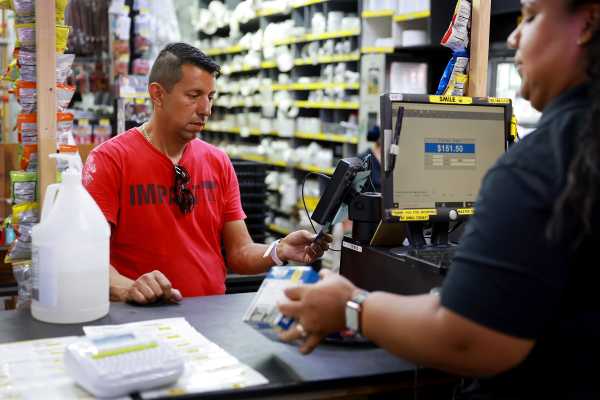
Inflation is on the way down: New data released Wednesday showed that prices rose 8.5 percent from a year ago, but that’s an improvement from June, when prices climbed 9.1 percent.
The monthly inflation rate was also flat, meaning that overall, prices didn’t pick up from June.
The slowdown last month — driven largely by falling fuel prices — is a significant step in the right direction. But the United States is still a long way from the Federal Reserve’s goal of 2 percent annual inflation over time, and the bad news is that high prices for many goods and services are likely here to stay for a while.
The Fed is taking aggressive steps to get inflation under control, but that doesn’t mean that prices overall are going to rapidly decline or return to pre-pandemic levels. It just means that prices as a whole will level off and increase more slowly, rather than continuing to skyrocket.
That’s how the Fed’s policy works. The central bank isn’t trying to bring prices down but rather rein in the rate of increase so they rise at a slower and more stable rate.
Fed officials target a low inflation rate partly because the central bank is wary of deflation — falling price levels — which can hurt economic growth. If prices are declining overall, consumers could pull back on spending money because they expect costs will be even lower in the future. Decreased spending could lead to a slowdown in hiring and business investment, meaning that more workers could be laid off and wage gains could slow. If Americans can instead expect prices to rise at a stable rate around 2 percent, they can better plan ahead and make more sound decisions about their finances.
But just because prices as a whole will continue to rise doesn’t mean that everything will be this expensive forever. Prices for many goods increased sharply during the pandemic as demand for goods soared, and economists say that certain categories could eventually see some price declines.
“Will prices go back to where they were in a pre-pandemic sense? Probably not,” said Michael Gapen, the head of US economics at Bank of America. “But is there room for some prices to fall fairly dramatically in the direction of where they were in the pre-pandemic era? I think the answer to that is yes.”
Americans have already seen some of those price declines happen. Gas prices fell 7.7 percent from the month before, according to the Consumer Price Index report released on Wednesday. After peaking at above $5 a gallon in June, gas prices have been falling steadily for weeks, although they still remain nearly $1 higher than they were a year ago.
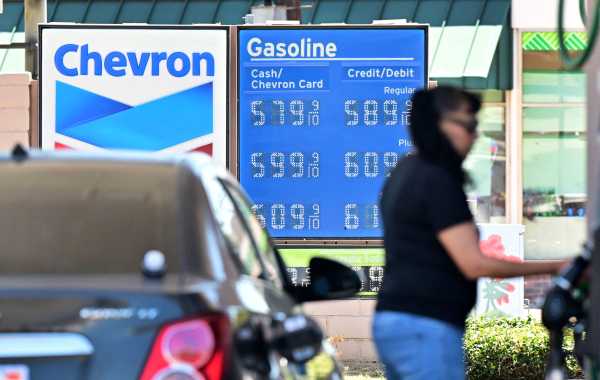
Retail gas could conceivably continue to fall in the future, possibly below $3 a gallon, because fuel prices tend to be more volatile. Used car and furniture prices, which both spiked during the pandemic, could also become cheaper as supply chains untangle and demand fades.
Services, on the other hand, typically get more expensive over time and are slower to change in price. That means that things like rent, meals at restaurants, and medical care will likely continue to get costlier, albeit at a more moderate pace, economists say.
That might seem dim. But eventually, it might not be so bad. If average wages are rising and outpacing the rate of inflation, that means that many Americans could afford to buy more even if prices are increasing. Right now, that isn’t happening. Average hourly earnings have picked up by 5.2 percent over the past year as workers have remained in high demand and businesses have struggled to fill open positions during the pandemic. That’s a rapid clip, but wage gains still haven’t been able to keep up with inflation, eroding those gains for many workers.
Jason Furman, an economics professor at Harvard University and former Obama administration economic adviser, said that ultimately what matters is how much wages rise compared to the rate of inflation.
“If wages keep growing quickly and price growth slows, people would be more able to afford things than they were before all of this,” Furman said. “So if we come out of this episode, and everyone’s making 15 percent more than they were before and prices are 12 percent higher, that’s not so bad.”
Goods that soared in price could see reversals
Demand for goods shot up during the pandemic as consumers used their pent-up savings to purchase new couches and work-from-home equipment. Economists say certain goods could see prices drop as inflation moderates and consumers spend more on services and less on goods. But economists caution that significant price declines for many items are still months or years away, meaning that the United States will be in an uncomfortable period of higher prices for some time.
Wendy Edelberg, the director of the Brookings Institution’s Hamilton Project, said she expected to see prices fall for many goods, including exercise bikes and small appliances, as demand falls and supply constraints ease. Big retailers like Walmart and Target have already said they would sell products at discounted rates to relieve their overstocked inventories.
“As both of those factors recede, I fully expect goods prices to outright fall,” Edelberg said. “How far they fall and whether or not they get back to trend, or whether or not they actually even dip below trend for a little while, depends on a couple of different factors.”
Edelberg said there were “huge unknowns,” such as how the war in Ukraine continues to affect energy costs, which would impact the cost of transporting goods to stores. Consumer and business expectations for inflation also matter. If firms expect inflation to remain high, they might be reluctant to lower prices even as demand starts to subside, Edelberg said.
Laura Rosner-Warburton, a senior economist at MacroPolicy Perspectives LLC, said used car prices could decline as supply chain disruptions ease (used car prices fell slightly in July, but they’re still 6.6 percent higher than a year ago). Car manufacturers have struggled to acquire critical parts like semiconductor chips during the pandemic, stalling production and driving up prices. The lack of new cars has had spillover effects on the used car market, since people are trading in fewer vehicles.
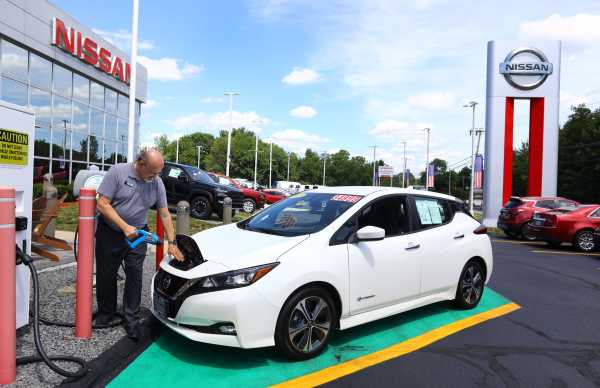
“We’ve seen such an unprecedented rise in the price level of vehicles,” she said. “Even if supply improves, we will likely still be at a higher price level than we were prior to the pandemic, but we could see a lot of the increase reverse, particularly in used cars.”
Rosner-Warburton said that supply remains tight, though, and that car prices could see more of a decline in the next two to three years, rather than the next six months.
Food and gas prices, which tend to be more volatile, are also more likely to fall compared to other goods. Retail gas prices have declined in recent weeks because of a drop in oil prices as investors grow more worried about a potential recession. The cost of food, however, picked up in July, rising 1.1 percent from June.
“Food and fuel are two of the more volatile components in the inflation basket. They may go up and they may go down,” said Joe Brusuelas, the chief economist at RSM US. “You may see fuel back in the $2.50 range.”
But economists warn that the war in Ukraine still makes the outlook on gas prices uncertain, and relief would likely only be temporary if fuel prices did plummet below $3 a gallon.
On the services side, airline fares will likely continue to decline after seeing an enormous boom earlier this year, Rosner-Warburton said. Airline fares already fell sharply in July, decreasing 7.8 percent from the month before. As summer demand recedes and people travel less, price levels should fall further but could still remain higher than pre-pandemic levels because of higher costs for labor and fuel, Rosner-Warburton said.
Services are more likely to keep climbing
It’s unlikely for many services to see significant price declines, mostly because businesses are paying more for labor now and workers usually don’t experience pay cuts, said James Knightley, the chief international economist at ING Economics. As labor costs increase, it becomes more expensive for businesses to operate, leading to firms passing on some of those cost increases to consumers.
“Employers don’t like doing it,” Knightley said. “The relationship with your workers is hurt very badly. So actual wage cuts, you only tend to see that in extreme circumstances.”
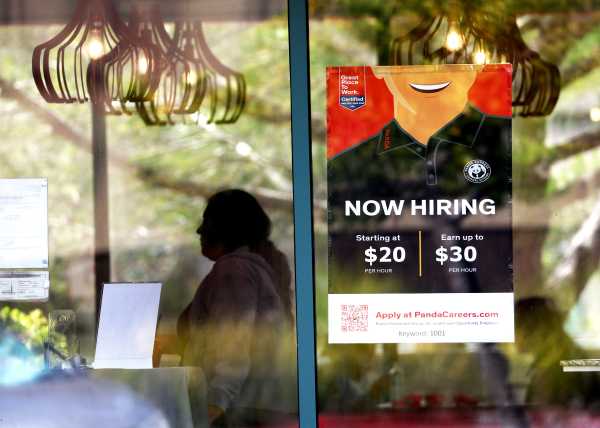
Knightley said that even if the United States tips into a recession in the coming months, he was expecting it to be a relatively shallow downturn, since many aspects of the labor market remain strong (employers added 528,000 new jobs to the economy last month and the unemployment rate dropped to 3.5 percent, the same level as in February 2020).
While food at the grocery store could become cheaper, meals at restaurants are more likely to increase in price, although at a slower pace than now, because businesses are facing higher labor costs that have spiked during the pandemic recovery, said Robert Dent, a senior US economist at Nomura Securities.
“Right now, wage inflation in the food services industry is very, very high,” Dent said. “So that could mean that consumers might see a divergence between how quickly grocery store prices normalize compared to restaurant menu prices.”
Rent is also unlikely to get cheaper. Although rent prices will probably grow at a slower rate than they are now in the coming months and years, they don’t typically see outright price declines outside of a severe economic downturn, said Omair Sharif, the founder of research firm Inflation Insights. In July, rent prices continued to climb, rising 0.7 percent from June.
“Wage growth and labor income tend to be the biggest drivers of those gains,” Sharif said. “And then just being short of affordable rentals is probably part of why they tend to steadily increase over time.”
Prices for hospital and physician services will also probably keep getting more expensive, since overall medical care has seen few periods of price declines, Sharif said. And goods that haven’t seen huge price spikes during the pandemic, such as apparel and alcoholic beverages, don’t have much room to fall. Apparel prices, which are about 4 percent above the pre-pandemic trendline, could decrease as retailers try to offload excess inventory, but it wouldn’t take long for those prices to fall back to more normal levels, Sharif said.
Wage gains could help people cope. But it’s unclear when they’ll outpace inflation again.
To get inflation under control, the Fed has been raising interest rates since March to cool consumer demand. As borrowing money gets more expensive, the idea is that consumers will start to buy fewer goods and services, eventually leading to a drop in prices. But if consumers are spending less, businesses could pull back on hiring, likely resulting in lower demand for workers and slower wage growth, said Sarah House, a senior economist at Wells Fargo.
“I think we’re still probably a year or so out before wage growth actually starts to exceed inflation,” House said.
Adam Shapiro, an economist at the Federal Reserve Bank of San Francisco, said that nominal wage growth has historically outpaced inflation by about a percentage point. Shapiro said that nominal wage growth could rise at a slightly faster rate than inflation in the medium run, or roughly over the next two to five years, but he noted that the time frame was extremely uncertain since it depends on the easing of pandemic-related and geopolitical disruptions.
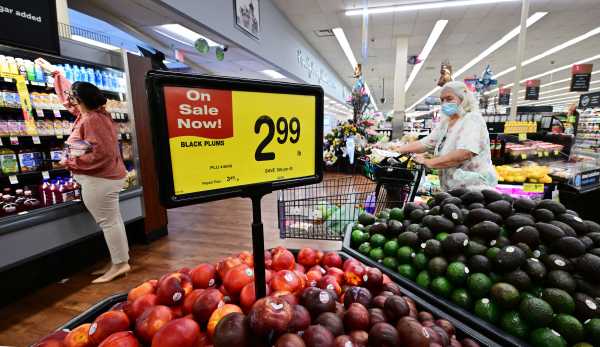
That might be little comfort for Americans who are finding it difficult now to afford basic essentials, such as gas, rent, and groceries.
Amanda Krause, 36, a managing editor for a publisher in Tucson, Arizona, said she was relieved to see gas prices decline in recent weeks. It now costs her about $30 to fill up her 2006 Ford Focus, a slight decrease from roughly $40 a month ago.
But Krause said other parts of her budget have become more expensive, including day care for her 3-year-old daughter and groceries for her family. Krause said she recently noticed that the price of a loaf of bread she usually buys every week rose by $1, and ground beef that used to cost $10 has increased to nearly $14.
Although Krause received a 3.5 percent salary increase last month, she said she has still struggled to keep up with rising prices, and she was unsure if she would ever see her grocery or child care costs fall substantially.
“I wish I could be optimistic,” Krause said. “We’ve seen gas prices steadily fall over the last three or four weeks, but today I noticed my grocery bill actually went up quite a bit since last week, and I bought the same amount of food or less. So that doesn’t make me feel super hopeful.”
Will you support Vox’s explanatory journalism?
Millions turn to Vox to understand what’s happening in the news. Our mission has never been more vital than it is in this moment: to empower through understanding. Financial contributions from our readers are a critical part of supporting our resource-intensive work and help us keep our journalism free for all. Please consider making a contribution to Vox today.
Sourse: vox.com